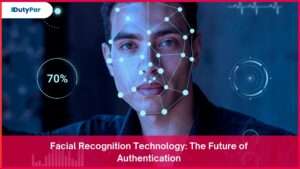 Facial recognition technology has emerged as a cutting-edge tool in the field of biometric authentication. With the proliferation of digital devices and the rise of online transactions, the need for secure and efficient authentication systems has become more crucial than ever before. Facial recognition software is fast becoming the go-to solution for organizations looking to enhance their security systems and streamline their identity verification processes.
Facial recognition technology has emerged as a cutting-edge tool in the field of biometric authentication. With the proliferation of digital devices and the rise of online transactions, the need for secure and efficient authentication systems has become more crucial than ever before. Facial recognition software is fast becoming the go-to solution for organizations looking to enhance their security systems and streamline their identity verification processes.
In this article, we will explore why facial recognition technology is the future of authentication and how it is transforming the way we authenticate our identities.
What is Facial Recognition Technology?
Facial recognition technology is a biometric authentication system that uses algorithms to identify an individual based on their facial features. The system captures an image of the user’s face and compares it with a database of pre-existing images to verify their identity. This technology uses artificial intelligence to recognize patterns and features unique to each individual’s face, making it an accurate and reliable authentication system.
The Benefits of Facial Recognition Technology
Facial recognition technology offers several benefits over traditional authentication systems, making it a popular choice for organizations across various industries.
Enhanced Security
One of the primary benefits of facial recognition technology is the enhanced security it provides. With this technology, users can be authenticated quickly and accurately, making it difficult for unauthorized individuals to gain access. Facial recognition systems are also resistant to forgery and manipulation, further enhancing security.
Improved User Experience
Facial recognition technology offers a seamless user experience, eliminating the need for users to remember complex passwords or provide personal identification documents. This technology can also be integrated with mobile devices, enabling users to authenticate their identity quickly and easily, from anywhere.
Streamlined Identity Verification
Facial recognition technology enables organizations to streamline their identity verification processes, reducing the need for manual verification and the associated costs. With this technology, organizations can quickly verify the identity of individuals, making it ideal for industries such as banking, healthcare, and government services.
Real-World Applications of Facial Recognition Technology
Facial recognition technology has numerous real-world applications across various industries.
Financial Services
In the financial services industry, facial recognition technology is being used to enhance security and streamline identity verification processes. Banks and other financial institutions are leveraging this technology to authenticate customer identities quickly and securely, reducing the risk of fraud.
Healthcare
The healthcare industry is also adopting facial recognition technology to improve patient identity verification and ensure data privacy. This technology enables healthcare providers to verify patient identities accurately, reducing the risk of medical errors and identity theft.
Government Services
Facial recognition technology is being used by governments to improve security and streamline identity verification processes. This technology is being used to authenticate identities for passport applications, driver’s license renewals, and other government services.
Challenges and Concerns
While facial recognition technology offers numerous benefits, it also raises concerns around privacy and security. Some of the key challenges and concerns include:
Data Privacy
Facial recognition technology requires the collection and storage of sensitive personal information, raising concerns around data privacy. Organizations must ensure that they have appropriate data protection policies and practices in place to protect this information.
Accuracy and Bias
Facial recognition technology has been criticized for its accuracy and potential for bias. There have been instances of false positives and negatives, leading to concerns around the fairness and reliability of this technology.
Security Risks
Facial recognition technology is vulnerable to security risks, such as hacking and identity theft. Organizations must implement robust security measures to protect their facial recognition systems from cyber threats.
Conclusion
Facial recognition technology is rapidly transforming the way we authenticate our identities. With its numerous benefits, including enhanced security, improved user experience, and streamlined identity verification processes, facial recognition technology is becoming an increasingly popular choice for organizations across various industries. It has real-world applications in financial services, healthcare, government services, and more.
However, as with any technology, there are challenges and concerns that need to be addressed. Data privacy, accuracy, bias, and security risks are among the key challenges and concerns associated with facial recognition technology. Organizations must ensure that they have appropriate policies and practices in place to address these concerns and protect their facial recognition systems from cyber threats.
